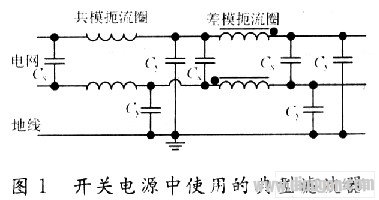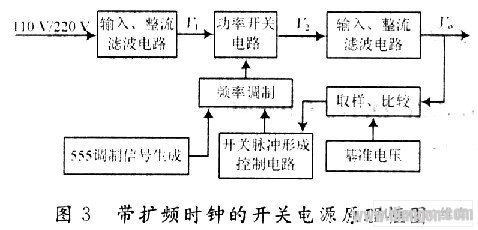Electromagnetic interference (EMI) from switching power supplies is a critical issue in modern electronics. EMI arises from three main factors: the source of interference, the transmission path, and the device being affected. Therefore, effective EMI suppression must address all three aspects. The goal of improving electromagnetic compatibility (EMC) in switching power supplies is to minimize the interference source, eliminate coupling and radiation between the source and the affected device, and enhance the immunity of the victim device.
1.1 Using Filters to Suppress EMI
Filters are one of the most effective methods for suppressing EMI. They can block unwanted signals from entering or exiting the equipment, which helps reduce both conducted and radiated interference. Installing filters on the input and output circuits of a switching power supply not only solves conducted emissions but also plays a key role in reducing radiation. There are two main types of filter technologies: passive and active filtering.
1.1.1 Passive Filtering Technology
Passive filters are simple, cost-effective, and reliable. They consist of inductors, capacitors, and resistors, and are primarily used to suppress conducted emissions. A typical passive filter design for a switching power supply is shown in Figure 1. Due to the large capacitance in the power supply circuit, the rectifier may generate high-frequency harmonic currents that interfere with the power grid. Additionally, when the switch turns on and off, the transformer's primary coil produces pulsating current, causing induced interference in surrounding circuits. This includes differential mode and common mode interference, which can spread through the power lines and affect other devices. The differential mode filter reduces internal interference, while the common mode filter helps suppress external noise.

1.1.2 Active Filtering
Active filtering is another method for suppressing common mode interference. It works by extracting a compensation signal from the main circuit that cancels out the original interference. As shown in Figure 2, a transistor is used to amplify the base current and filter the emitter current. The R1 and C2 filter network reduces ripple, making the overall system more stable. However, this technique is mainly suitable for low-voltage and low-power applications. When designing and selecting filters, it's important to consider frequency response, voltage rating, current capacity, impedance characteristics, shielding, and reliability. Proper placement and installation of the filter are also crucial to achieving optimal performance.

1.2 Shielding and Grounding Technologies
Shielding is an effective way to prevent electromagnetic radiation from switching power supplies. There are two types of shielding: electrostatic and electromagnetic. Electrostatic shielding protects against static electric fields and constant magnetic fields, while electromagnetic shielding is used to block alternating electric and magnetic fields. In a switching power supply, components like transformers and inductors are often shielded using copper or iron plates to reduce their electromagnetic emissions.
In addition, overall shielding should be implemented to prevent interference from spreading outside the system. This involves enclosing the entire unit and grounding it to the system chassis. However, issues like electromagnetic leakage at joints, input/output ports, and heat dissipation need to be carefully addressed. Grounding is essential for ensuring safety and enhancing the effectiveness of shielding. A proper grounding strategy can significantly improve the system's resistance to EMI.
1.3 PCB Design Techniques
PCB layout and wiring play a vital role in minimizing EMI. To reduce electromagnetic emissions and crosstalk, careful attention should be given to component placement, trace routing, and grounding. For example, reducing loop areas and increasing spacing between traces can help suppress field coupling. Grounding in switching power supplies is crucial, and there are three basic types: safety grounding, working grounding, and shielding grounding. The ground wire should be as thick as possible, and different grounds (AC, DC, analog, digital) should be separated to avoid interference.
1.4 Spread Spectrum Modulation Technology
Spread spectrum modulation is an efficient way to reduce EMI by distributing the energy of a periodic signal across a wider frequency range. This technique modulates the clock signal of the switching power supply to reduce the peak energy at specific frequencies. Compared to traditional methods, it doesn't require additional filter components or complex shielding, and has no negative impact on power efficiency. As shown in Figure 3, the pulse signal from the control circuit is modulated to create a spread spectrum clock, effectively lowering the emission intensity.

1.5 Adding a Power Factor Correction (PFC) Network
Power factor correction (PFC) is used to improve the input current waveform and reduce harmonic distortion. In a typical rectifier circuit, the AC voltage is stepped down and then rectified, leading to distorted waveforms and poor power factor. PFC technology ensures that the current follows the voltage waveform, resulting in a more sinusoidal shape. This reduces harmonic content and improves the overall efficiency of the power supply. Passive PFC uses inductors and capacitors to shape the current, while active PFC uses a control circuit to track the voltage waveform more precisely. Although more complex, active PFC provides better performance.
2. Conclusion
The design approach presented in this paper is practical and effective, addressing many of the limitations of traditional methods. By analyzing various EMI suppression techniques, such as optical isolators, surge absorbers, and soft-switching technologies, we can further optimize EMI control. The ultimate goal is to ensure that switching power supplies can be used safely and efficiently in various applications while minimizing electromagnetic pollution. In real-world design, it’s essential to consider all sources of EMI and apply multiple suppression techniques to achieve the best results. This leads to improved product quality, reliability, and compliance with EMC standards.
Copper-Clad Aluminum Core Wire,Copper Clad Aluminum Metal Wire,Copper Clad Aluminum Pure Copper Wire ,Copper Clad Aluminum Bimetallic Wire
changzhou yuzisenhan electronic co.,ltd , https://www.ccs-yzsh.com
